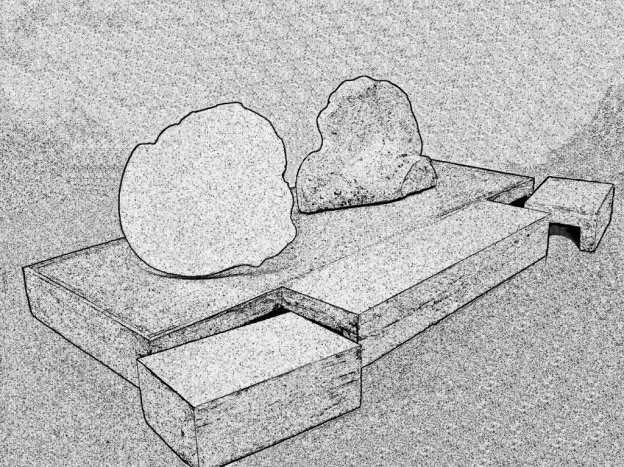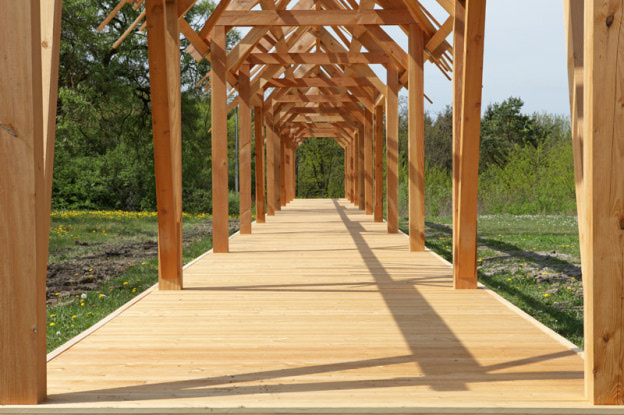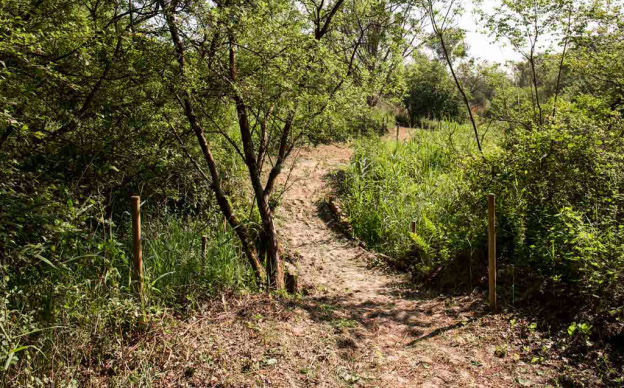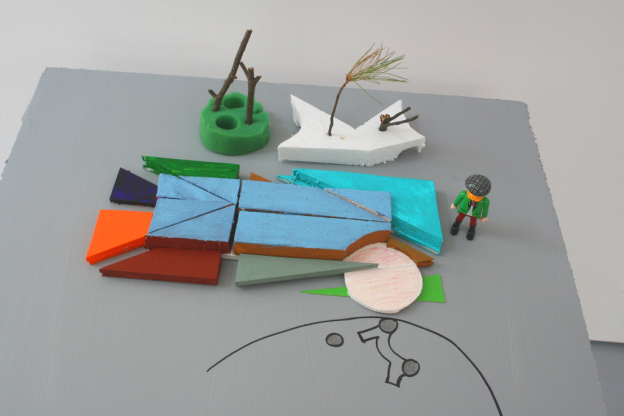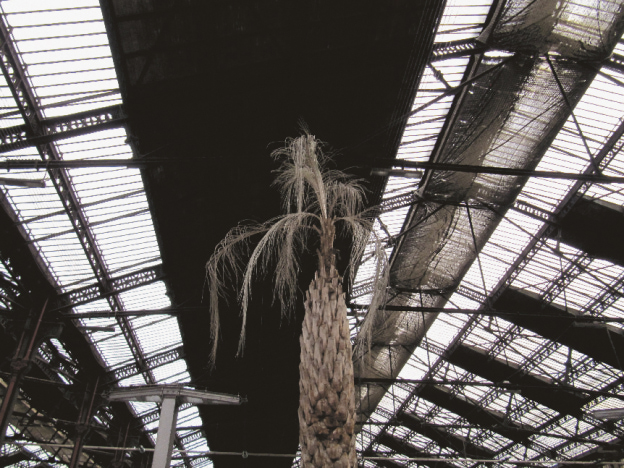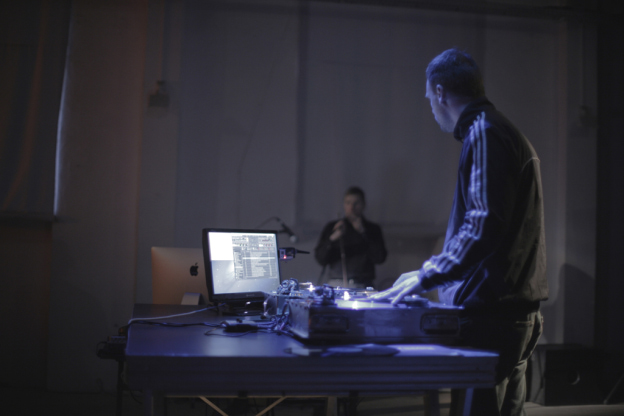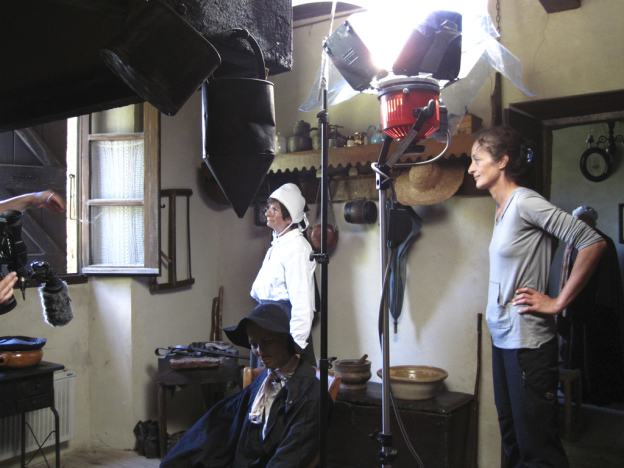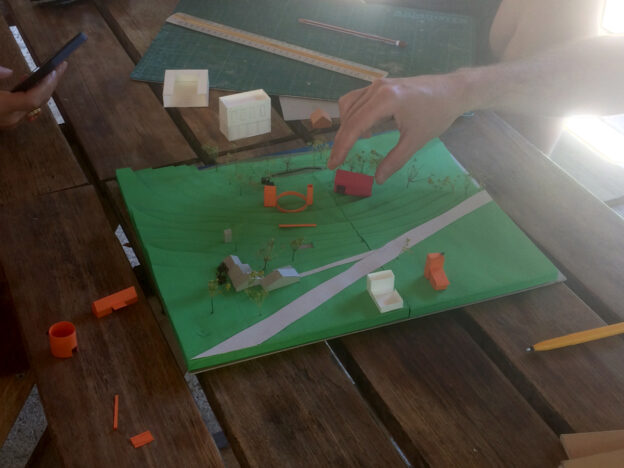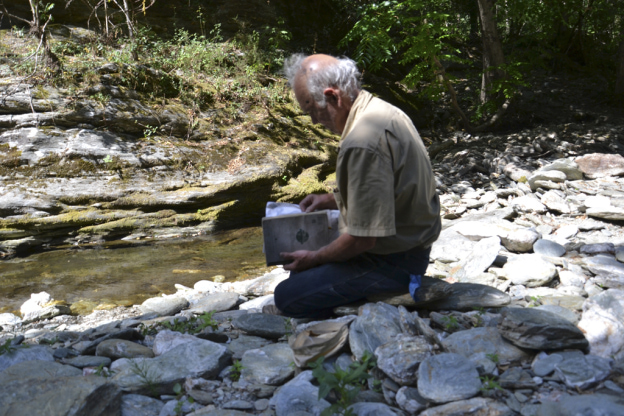Memory Monument
Eager to honour the memory of the under-privileged that they care for on a daily basis, Les Petits frères des Pauvres asked an artist to design a memorial monument in a cemetery. At the time of death, these destitute people are sometimes entitled to a burial plot granted by the city council for a period of six years, but their graves are rarely cared for when they have one. By dedicating a place for collective memory to them, Les Petits frères des Pauvres wanted to signify their belief in the unique value of each life.
Although it is a classic subject in art history, the funeral monument is unusual for artists of Guiseppe Gabellone’s generation. He chose to produce a secular monument that evokes death without resorting to sacred iconography typical of funerary statuary. At the same time he wanted to respect the atmosphere of the place, specific to 19th century French and Italian cemeteries.
The monument consists of two abstract glass modules placed on a white stone plinth that covers two vaults. The plinth is designed to retain rainwater and produce the effect of a mirror. The names of the deceased will be written on the front corner blocks.
The idea is to use the earth as a mold for the glass sculptures, “To make a solid form out of a cavity…as if to capture memory, translate the idea of memory.”
credits: Guiseppe Gabellone
Presentation folder: August 2012 – pdf
Commissioned by Les Petits frères des Pauvres
commission on hold
credits: Guiseppe Gabellone
